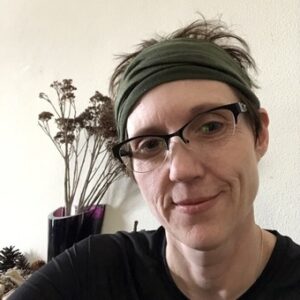
Stephanie Morrissette
Stephanie is an avid naturalist and a Library Assistant in the Adult Services Department at CDPL.
Happy National Mushroom Month, Crawfordsville! This month we celebrate everything fungi. Even though this month of observation happens in the autumn instead of the spring, we can still enjoy the cornucopia of varieties of fungi to not only view and respect but, of course, to cultivate or hunt to add to our daily diets.
The most popular mushroom in Indiana is the morel mushroom. If you attended our Library Naturalist’s Morel Mushroom program in April, then you learned the different types of morels that grow during the spring in Indiana. Some of you may be familiar with Chicken of the Woods, Turkey Tail, or even Puffballs, Oyster mushrooms, or Chanterelles.
I do not recommend foraging for fungi as a beginner without a trained mycologist or a state-certified mushroom hunter. But, to aid in your field identification research, we do have several books that can help you begin to build your knowledge. If you are interested in the culinary aspects of mushrooms, check out “The New Savory Wild Mushroom” by Margaret McKinney (589.222 McK) or “The Chanterelle Book” by Olle Persson (579.597 Per). For propagation information, we have “All That the Rain Promises and More” by David Arora (589.2 Aro). If you want to brush up on your morel knowledge, we have “Morel Mushrooms: Best Kept Secrets Revealed” by Michael Phillips (579.6 Phi), and “The Complete Mushroom Hunter” by Gary Lincoff (579.6 Lin).
By far, the best all-around ID reference book in our collection is “How to Forage for Mushrooms without Dying” by Frank Hyman (579.6 Hym). This title provides invaluable expert information in a way that is humorous and fun to read. For some great all-around guides to wild edibles, I hands-down recommend “How to Forage for Wild Foods without Dying” by Ellen Zachos (581.632 Zachos) and especially “Sam Thayer’s Field Guide to Edible Wild Plants of Eastern and Central North America” by Samuel Thayer (581.63 Tha).
Mushrooms should be admired and respected. Many mushrooms can cause illness or death if not prepared properly. Mushrooms are masters of disguise and also practice mimicry. That is why it is so important to have a trained mushroom forager explain the fine details of varieties of fungi before the hunt.
If you are interested in learning more about mushrooms, the Indiana Department of Natural Resources, Division of State Parks (www.in.gov/state-parks), or the Hoosier Mushroom Society (www.hoosiermushrooms.org) can provide more information. If you are a skilled mycologist, you can hunt to sell your mushrooms if you get approval and apply as a wild mushroom identifier. You can apply through the Indiana Department of Health at (www.in.gov/health/food-protection/wild-mushrooms).
For assistance locating titles mentioned, or for reference to other resources, the Adult Services Reference staff is happy to help with your search. CDPL is open to serve Monday through Friday from 9 am to 9 pm, Friday and Saturday from 9 am to 5 pm, and Sunday from 1 pm to 5 pm. You may reach us at 765-362-2242 or by email at ask@cdpl.lib.in.us.
